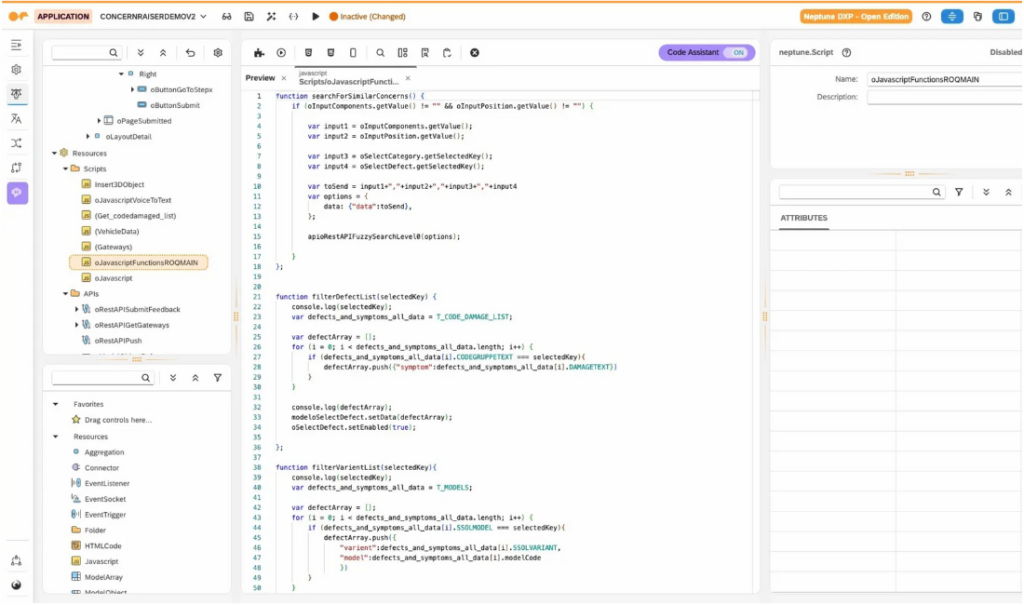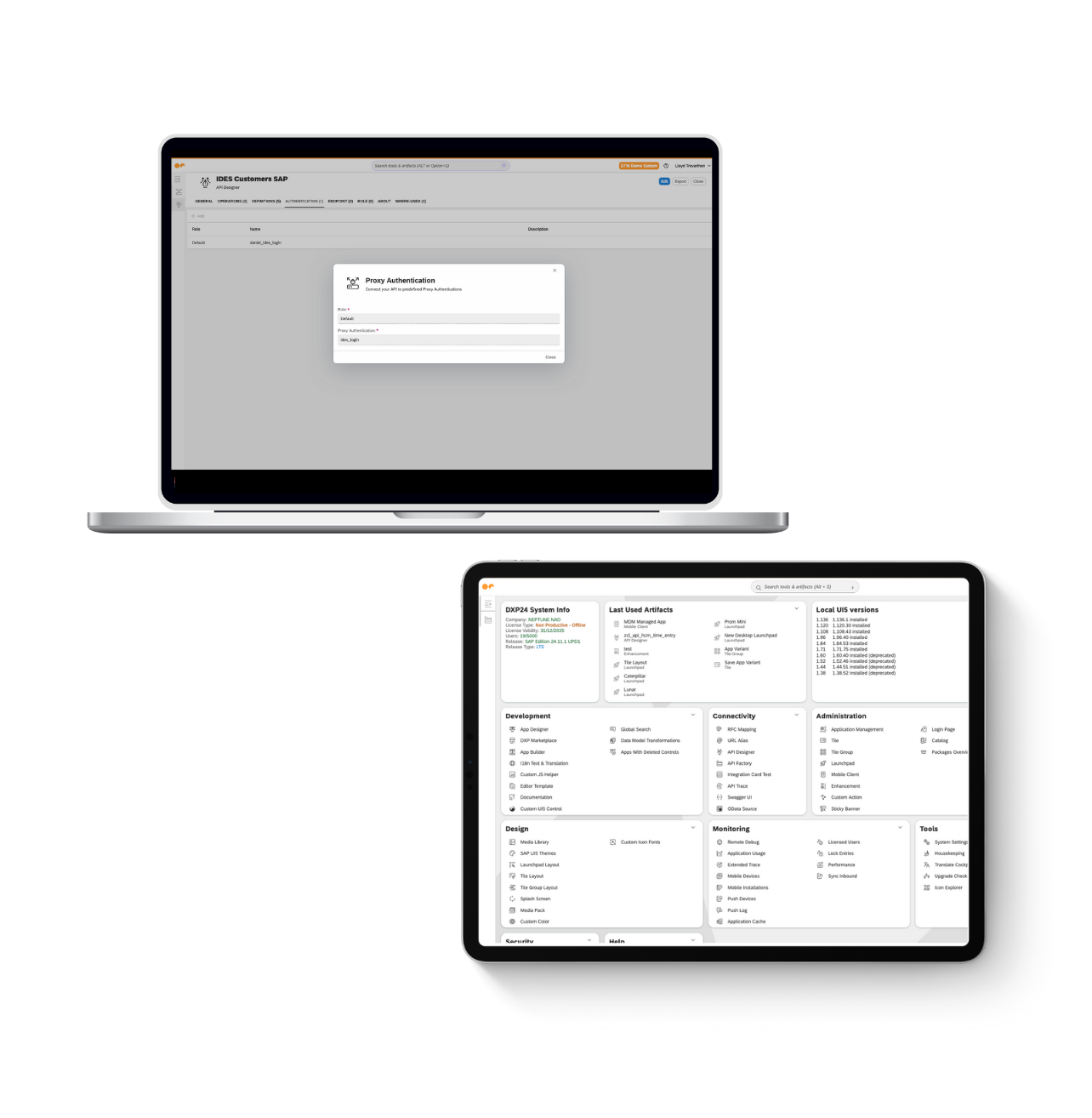
Trusted by SAP Teams Who Run Lean, Fast, and Clean
Built for the teams who actually build SAP apps
One Platform. Everybody Wins.
Whether you are writing ABAP or designing screens, Neptune adapts to your workflow. Developers get full-code control and native SAP access. Business teams get modern UI tools. Both get results, faster.
Business Teams
-
Empower teams with intuitive UI tools.
-
Deliver modern apps for every device.
-
Differentiate from SAP standard where needed with tailored apps that put you ahead of your competition .
Developers
-
Use your existing SAP skills: ABAP, SAPUI5, JavaScript.
-
Reuse backend logic and existing authorizations.
-
Create full-stack Fiori apps from one cockpit .
Why native low-code for SAP
Because You Should Not Have to Choose
Between Speed and SAP Standards.
Simple
Simplify SAP Development.
Drag and drop or write your own code. It is flexible for every skill level, from functional consultants to pro developers.
Clean
Keep your Core Clean.
Build outside ECC and S/4HANA using side-by-side extensibility or build inside ECC and S/4HANA on-stack while supporting a clean core, depending on your requirements and starting point. No core modifications and no future regrets.
Integrated
Real-time SAP Integration.
OData, RFCs, BAPIs, SAP tables are already connected. Every app uses your SAP roles, transports, and lifecycle tools.
Low-code for high-impact SAP teams
Everything You Need to Deliver
SAP Apps Faster .
“With Neptune, we went from months to days in delivering SAP apps and we did not have to retrain our whole dev team.”
SAP Lead
Global Manufacturing Company

Frequent
Asked Questions
Didn’t find what you need?

